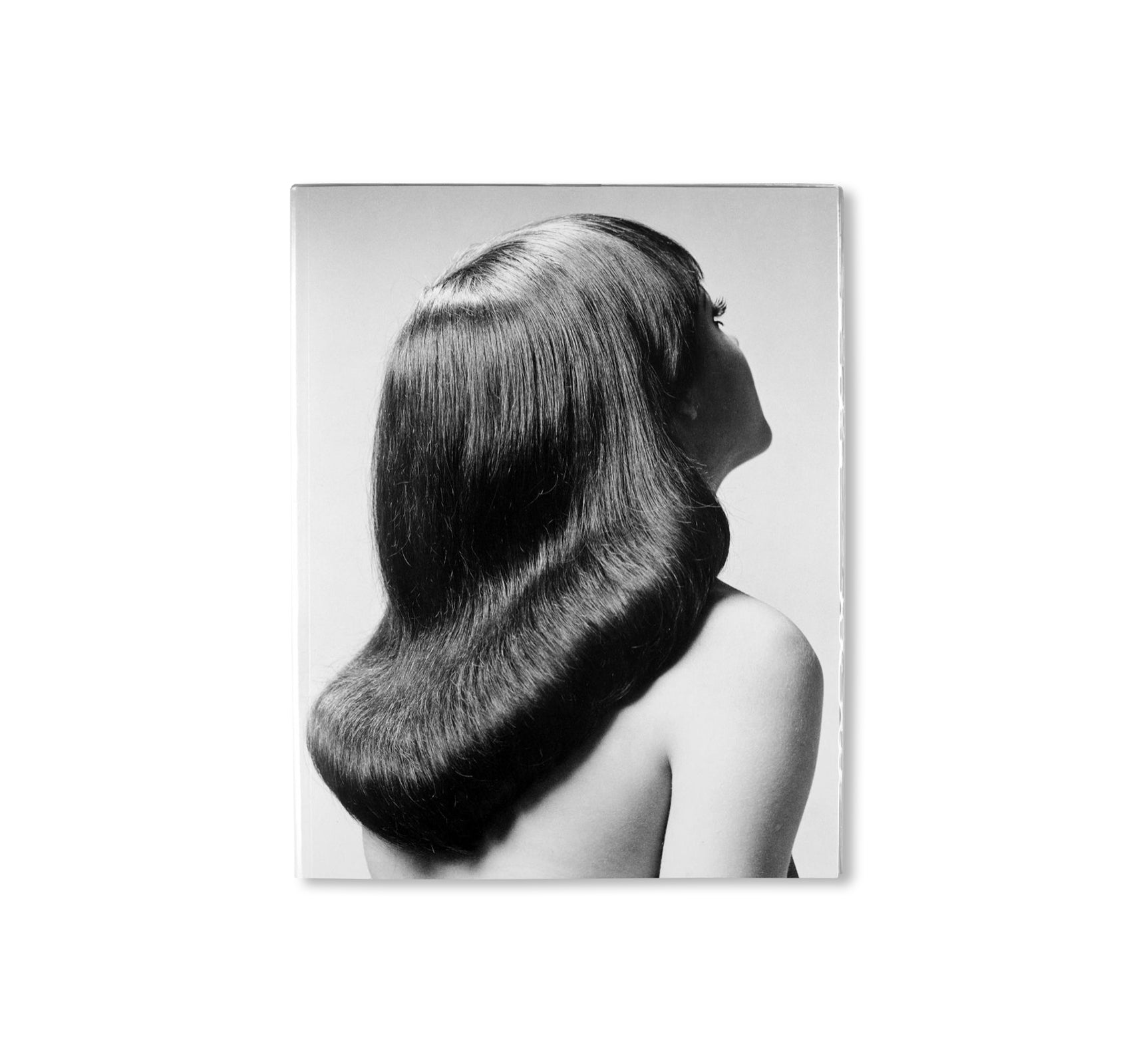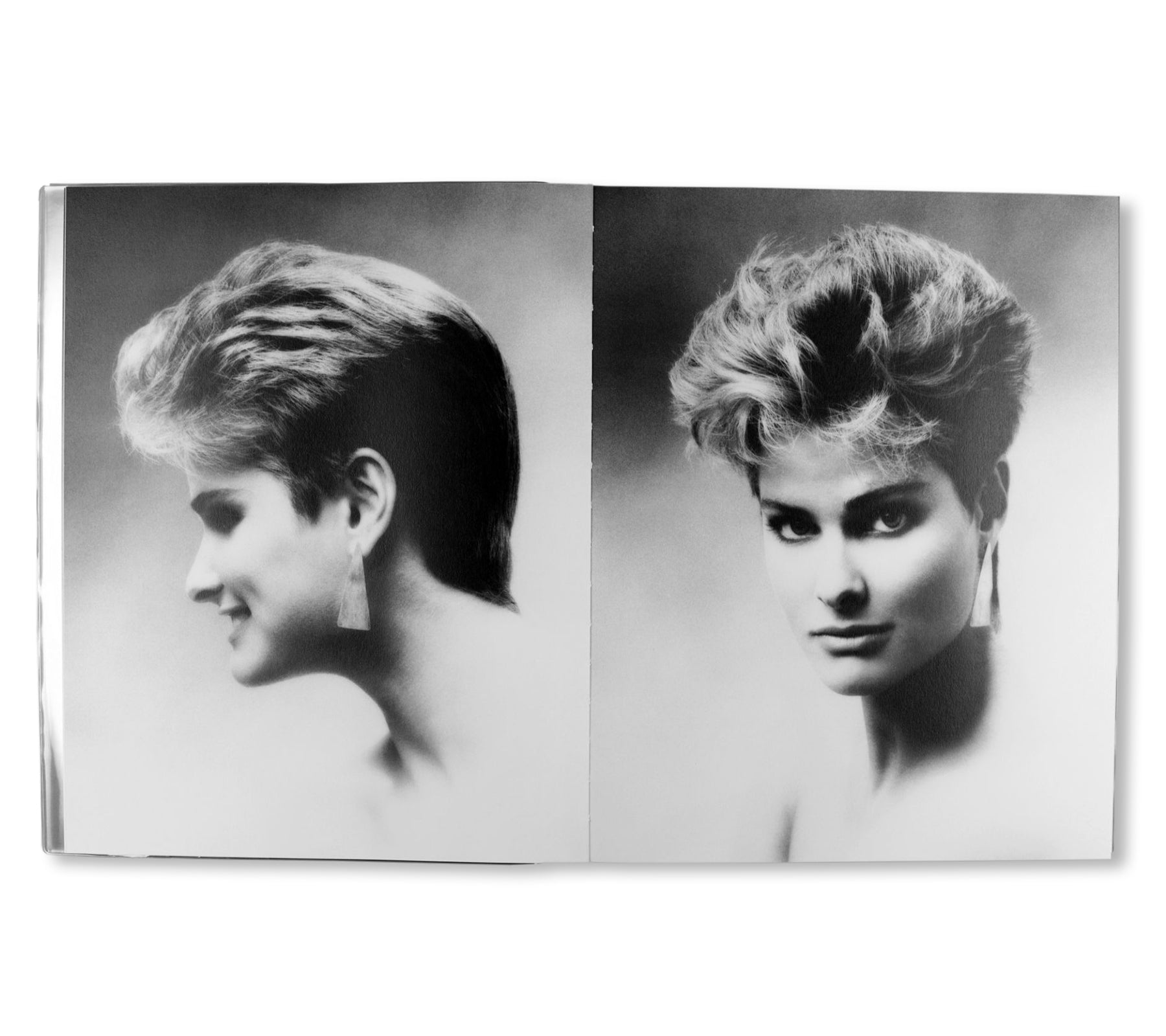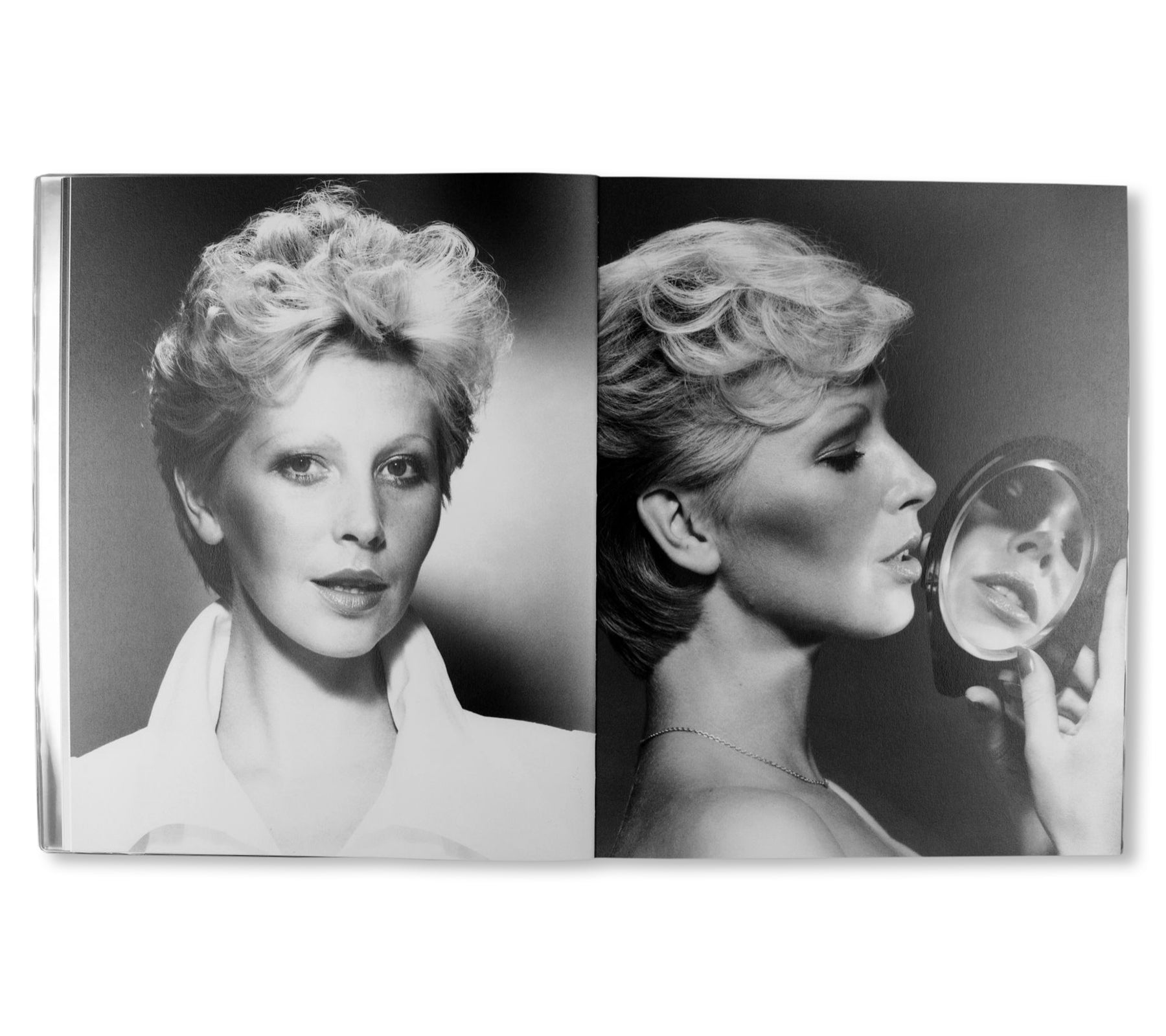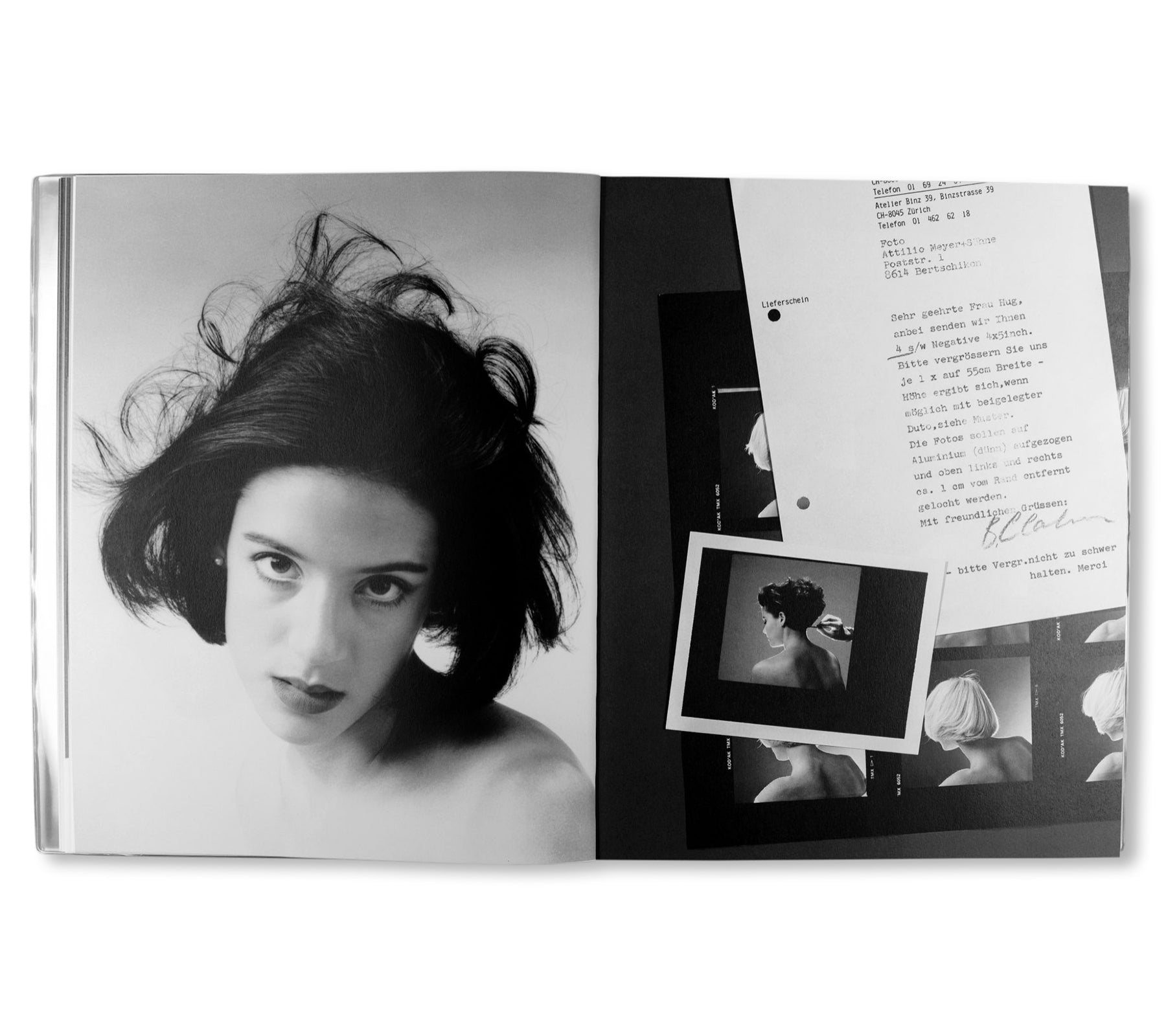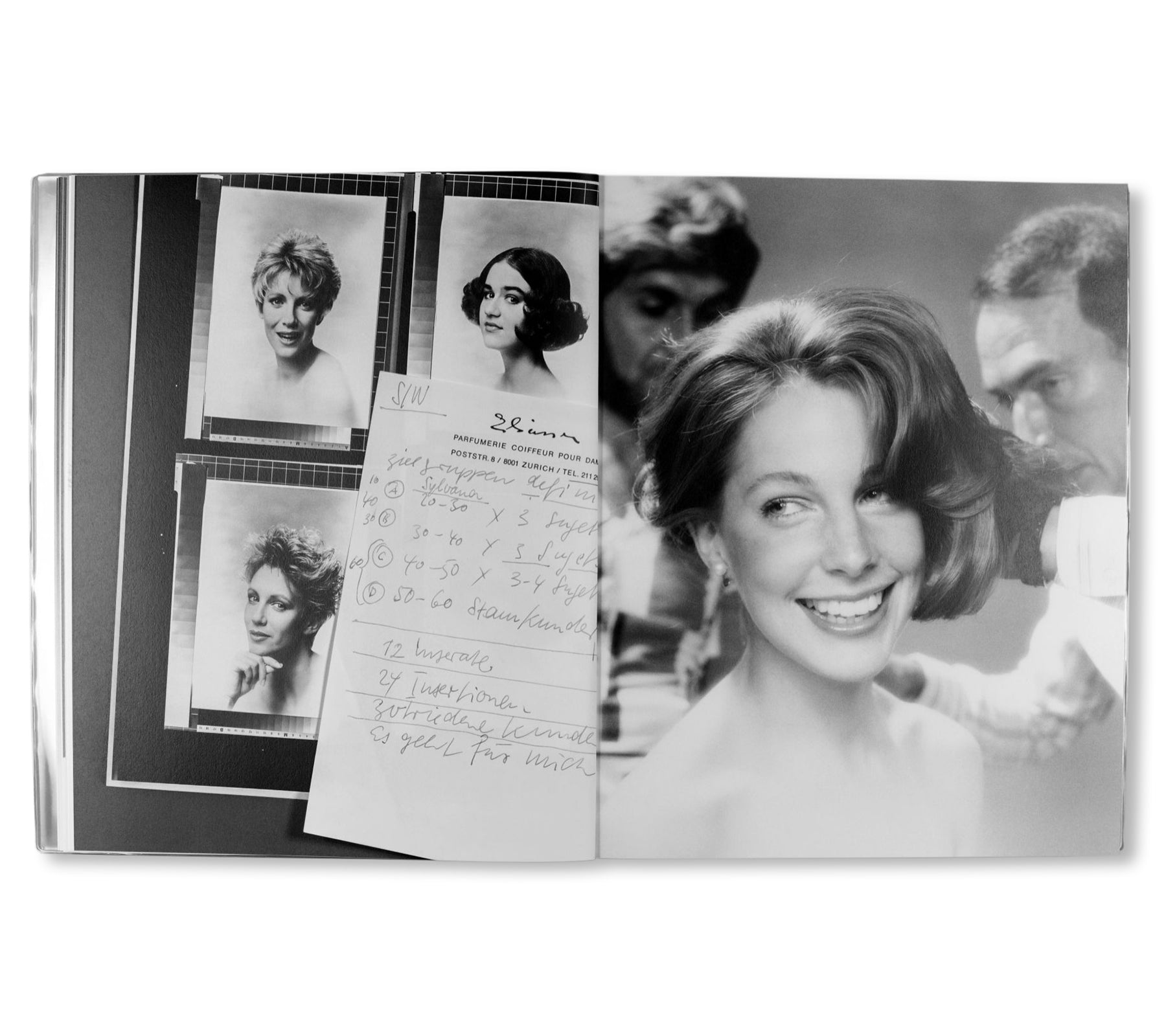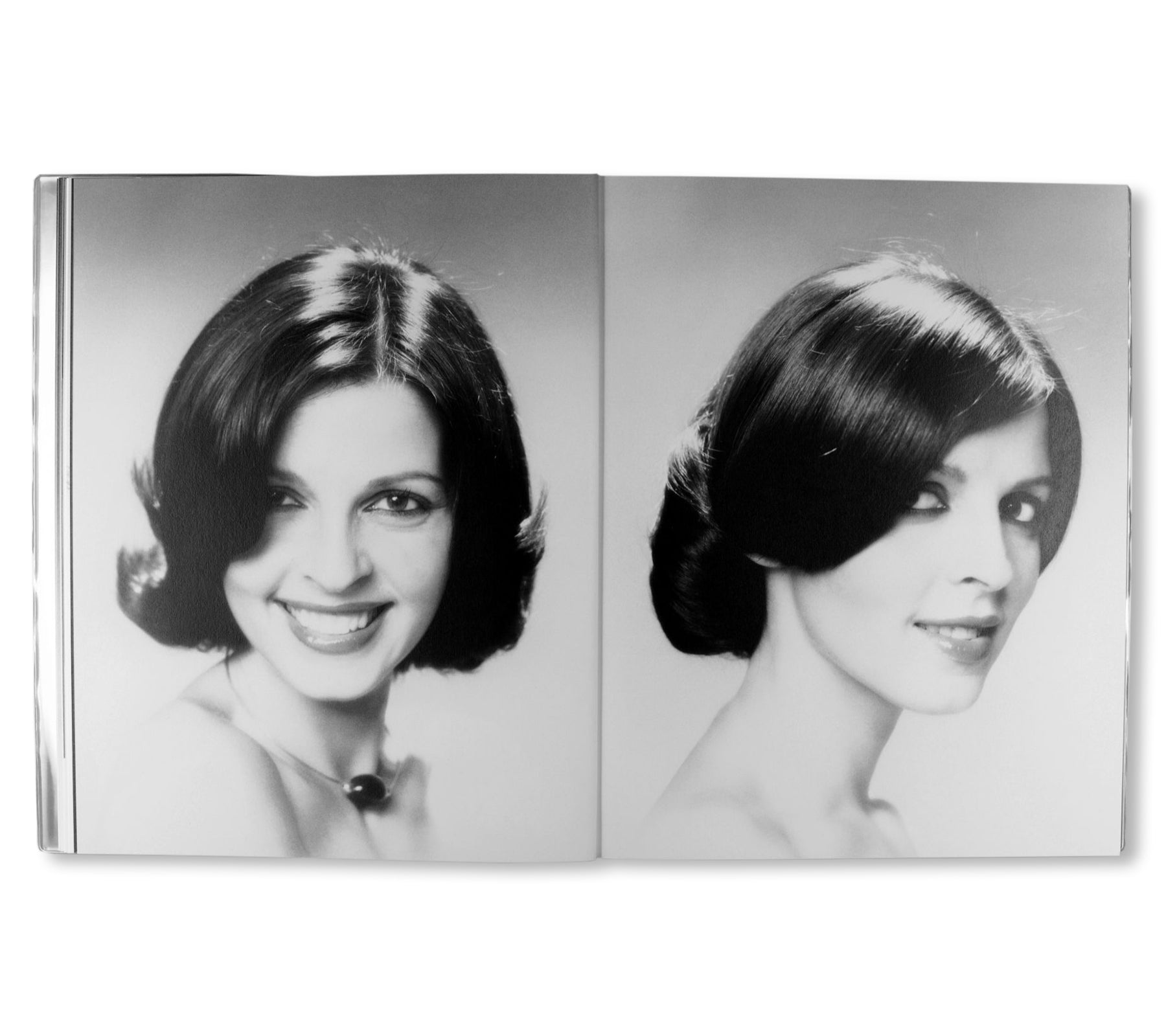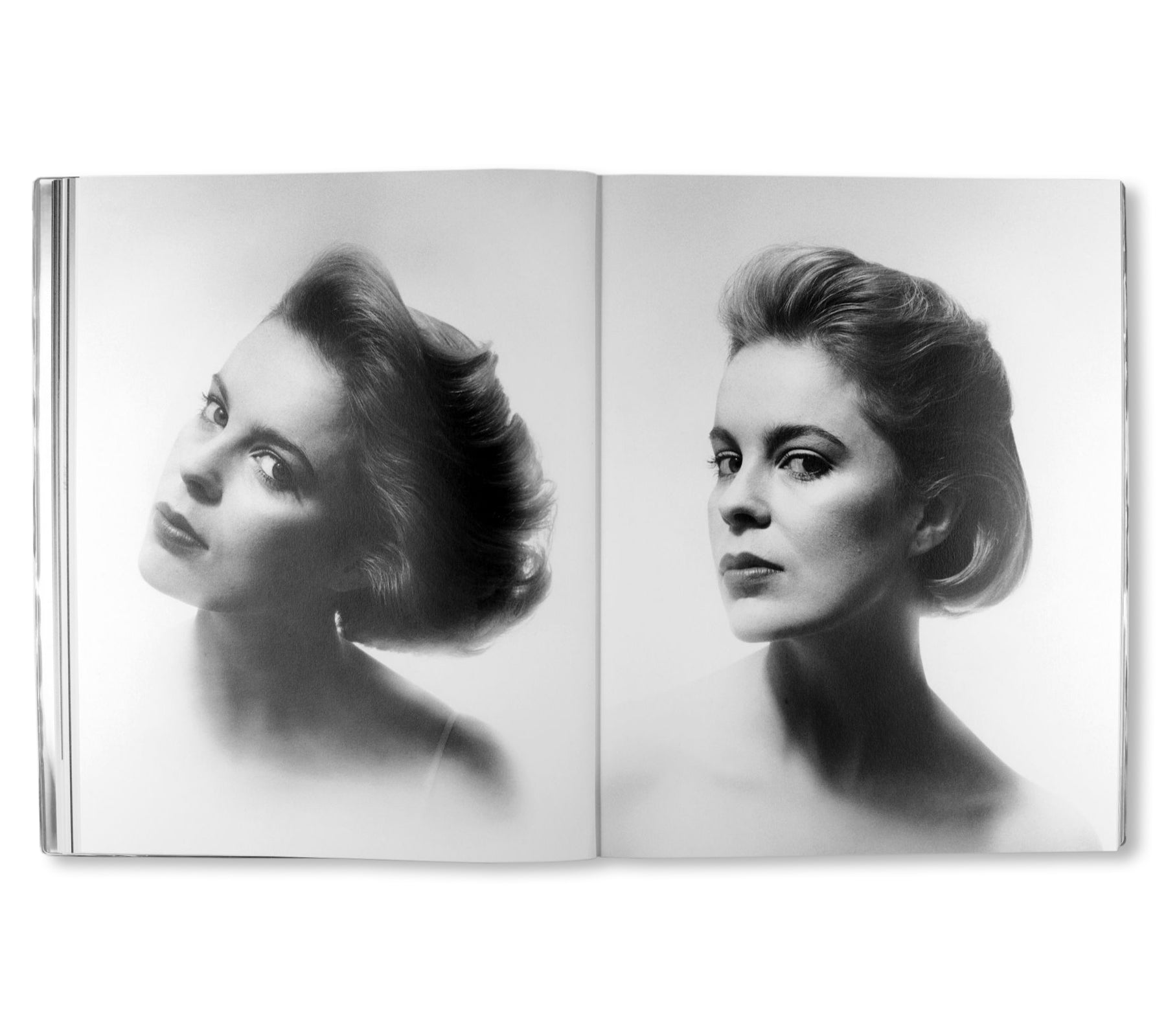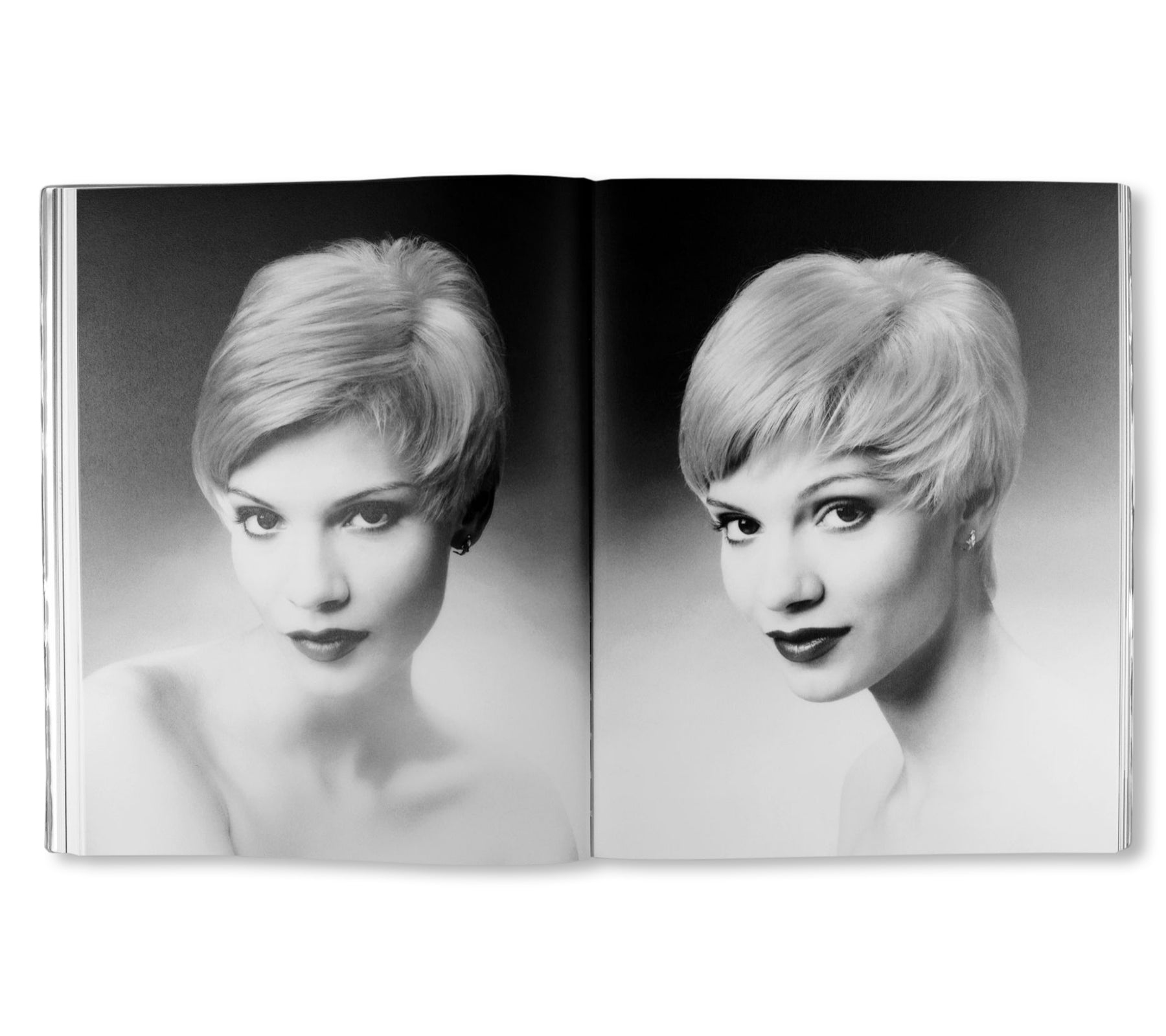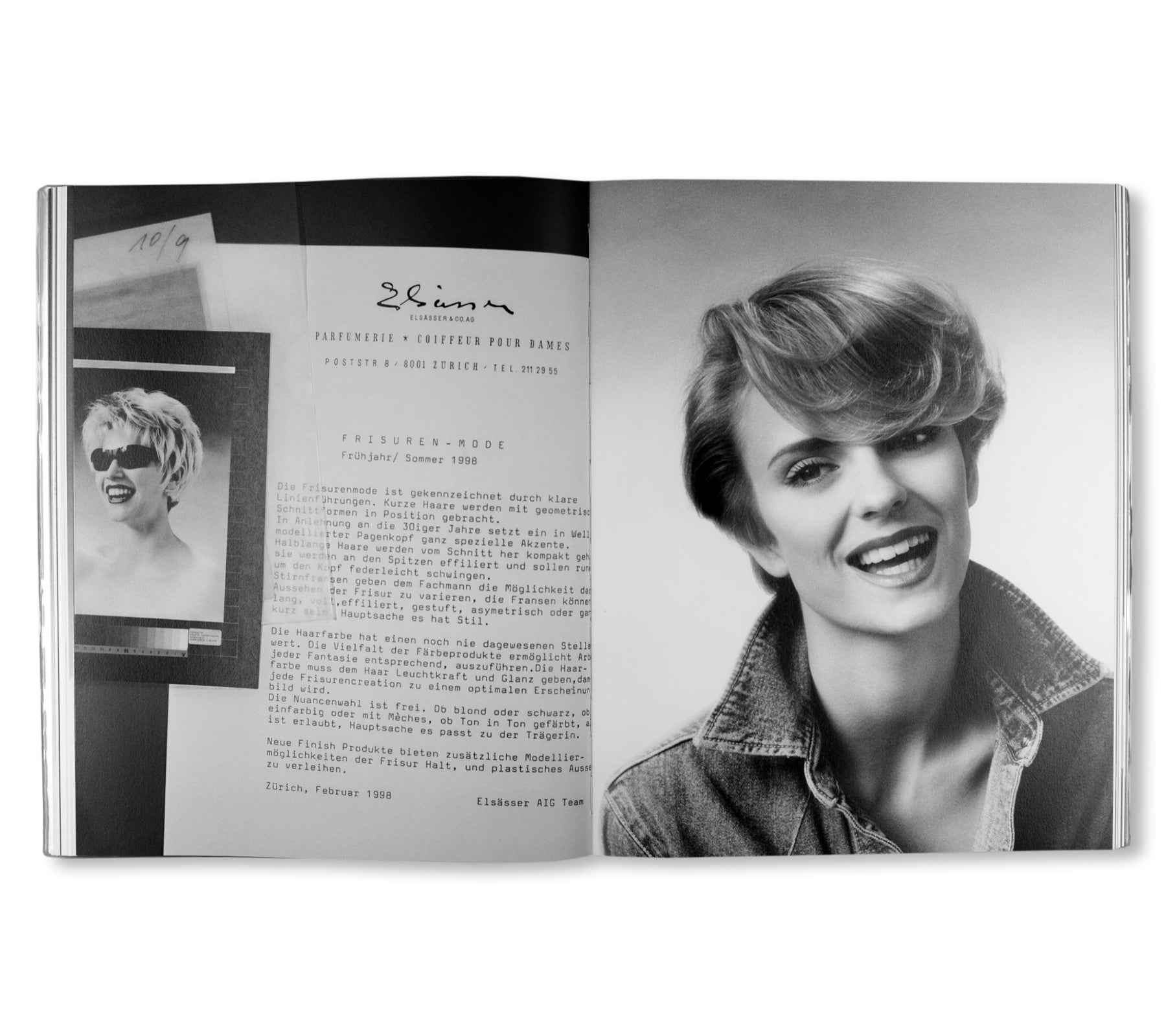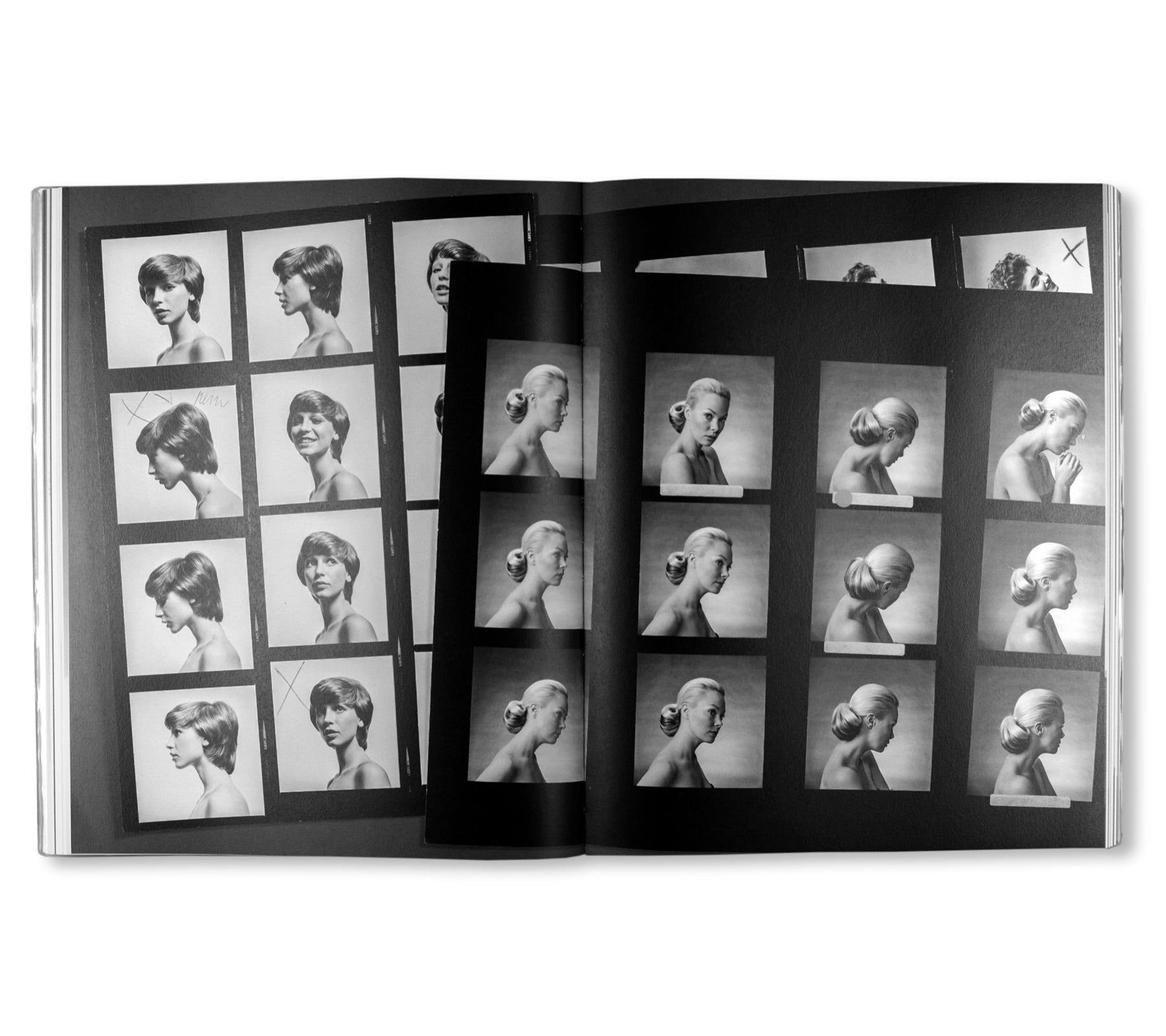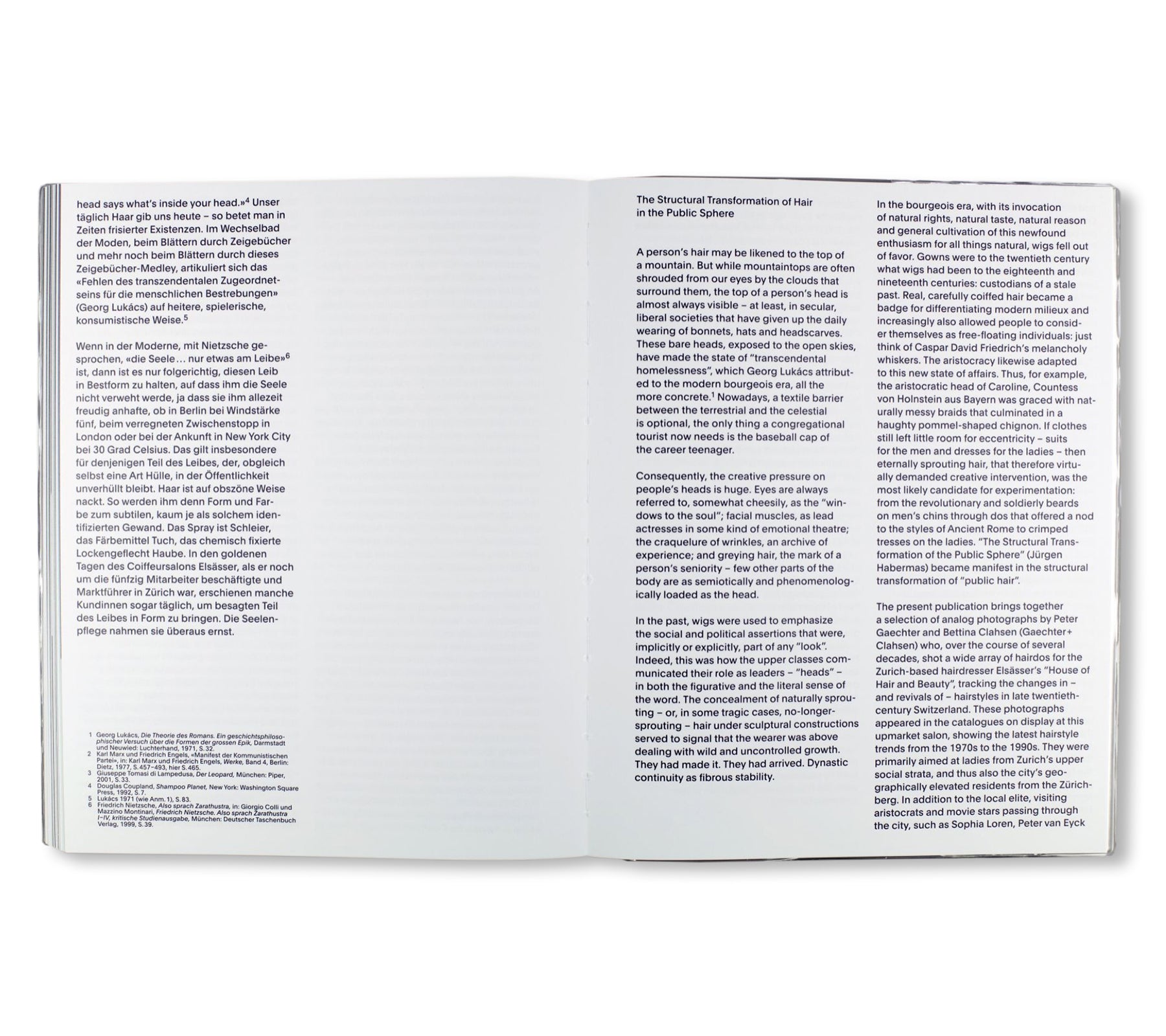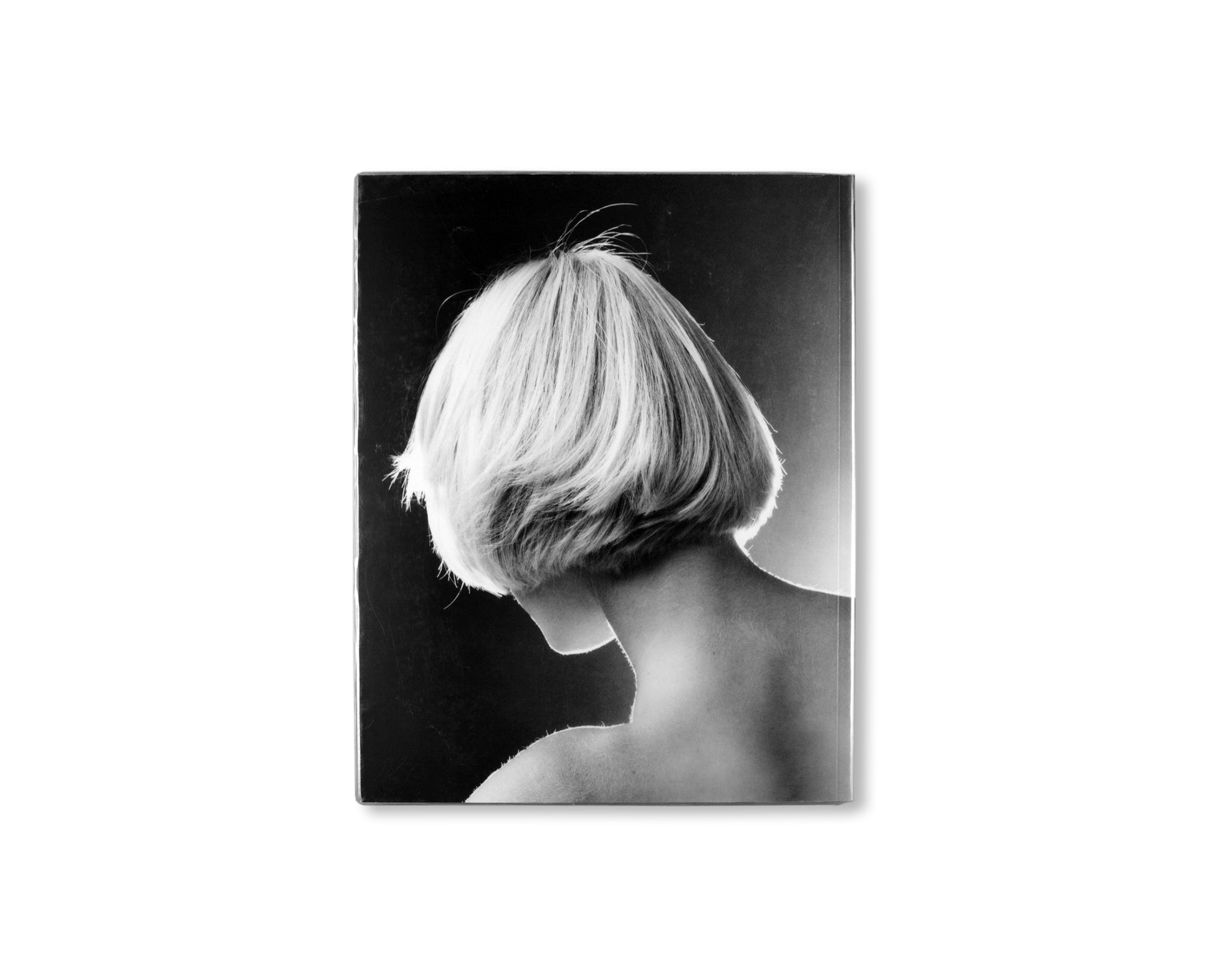FÜNF FINGER FÖHN FRISUR by Peter Gaechter, Bettina Clahsen
スイスを拠点とするフォトスタジオ「GAECHTER+CLAHSEN」の作品集。人の髪はしばしば山の頂上に例えられるが、山頂には大抵雲がかかっていてよく見えないのに対し、ボンネットや帽子、スカーフなどが使われなくなった今では、ヘアスタイルは常に視界に飛び込んでくる。そのため、素敵なヘアスタイルを手に入れなくてはというプレシャーを感じるのも当たり前となっている。写真家のぺーター・ゲヒター(Peter Gaechter)は、チューリッヒのヘアサロン「Elsässer Pour Dames」のために数十年に渡って様々な髪型を撮影し、20世紀後半のスイスの最新ヘアスタイルの変化とリバイバルの歴史を記録に残した。本書はこの高級サロンの店頭に飾られていたカタログから厳選したイメージを抜粋し、1970年代から1990年代の最新のヘアスタイルのトレンドを提示した。サロンでスタイリストが忠実に再現していた立体的なカットやヘアスタイルからは、その時その時の時代の雰囲気が伝わってくる。パンクカットに「冷戦」カット、「5本指の」ブロードライ、羽のようにふんわりした「チャーリーズ・エンジェルズ」に「オールド・ハリウッド」スタイルと、街の美人や「イットガール」、女優などが魅せる様々なヘアスタイルには、良いと思えば「なんでもあり」の消費文化の自由な気風だけでなく、例えばピクシーカットのアクセサリーとして突然登場する不格好な携帯電話のように、具体的な社会の変化までもが写し出されている。それだけでなく、作者の作品は、写真にもプロ精神が満ちていた時代があったことを思い出させる。スナップショットは一枚もなく、あえて素人っぽさを出したり、けばけばしくみせたりすることもない。そのイメージは、かつての写真家たちがそう願ったのと同じように、誰にも負けない個性を発揮したいと願う顧客に向けられている。
A person’s hair may be likened to the top of a mountain. But while mountaintops are often shrouded from our eyes by clouds around them, a person’s top is almost always visible―especially in latitudes that have given up the daily use of bonnets, hats and headscarves. Hence the understandably heavy pressure on people’s heads―to get the hair just right. Over the course of several decades, photographer Peter Gaechter shot a wide array of hairdos for Zürich hairdresser Elsässer Pour Dames, tracking the changes in―and revivals of ―hairstyles in late 20th-century Switzerland. The present publication brings together a selection of his photographs from the catalogues on display at these upmarket salons, showing the latest hairstyle trends from the 1970s to the 1990s. These sculpturesque cuts and coiffures, which were to be reproduced à l’identique on the customers’ heads, were also telltale signs of the times. Whether a punk or “Cold War Kids” cut, a “five-finger” blow-dry, feathery “Charlie’s Angels” wings or “Old Hollywood” coiffure―the multifarious hairstyles of local beauties, “It girls” and actresses featured in this book reflect the “why not?” whateverism of liberal consumer culture as well as concrete changes in society, e.g. in the sudden apparition of a clunky cell phone included in the picture frame as a pixie cut accessory. Gaechter’s photographs also hark back to an age in which photography was still infused with a spirit of professionalism. There are no snapshots here, no affectations of an amateur aesthetic, no strategically trashy elements―Gaechter's pictures target a clientele aspiring to distinction, as could once be said of the photographer’s craft as well.
